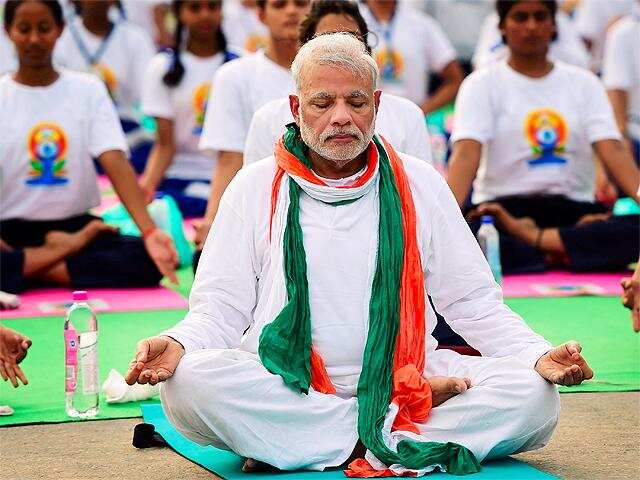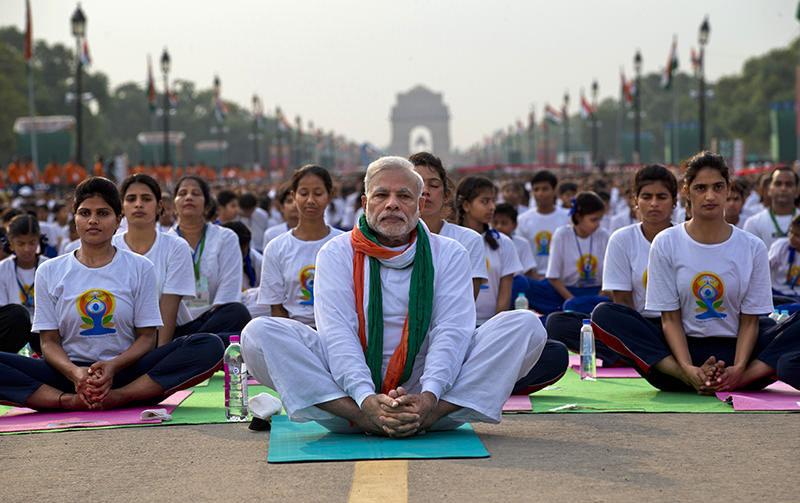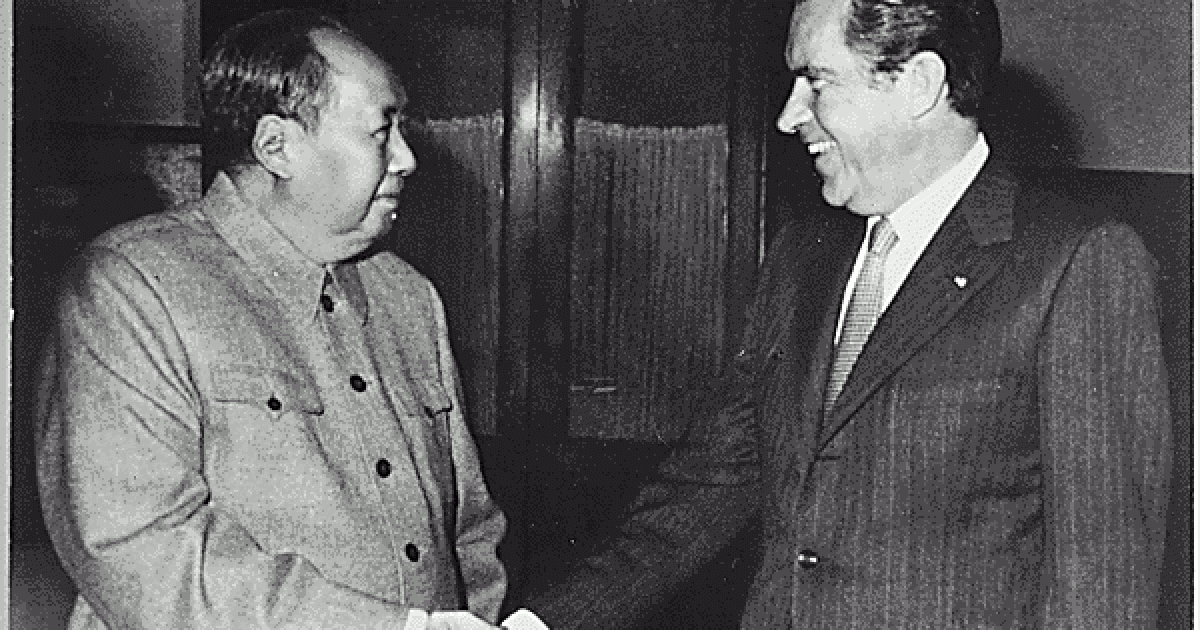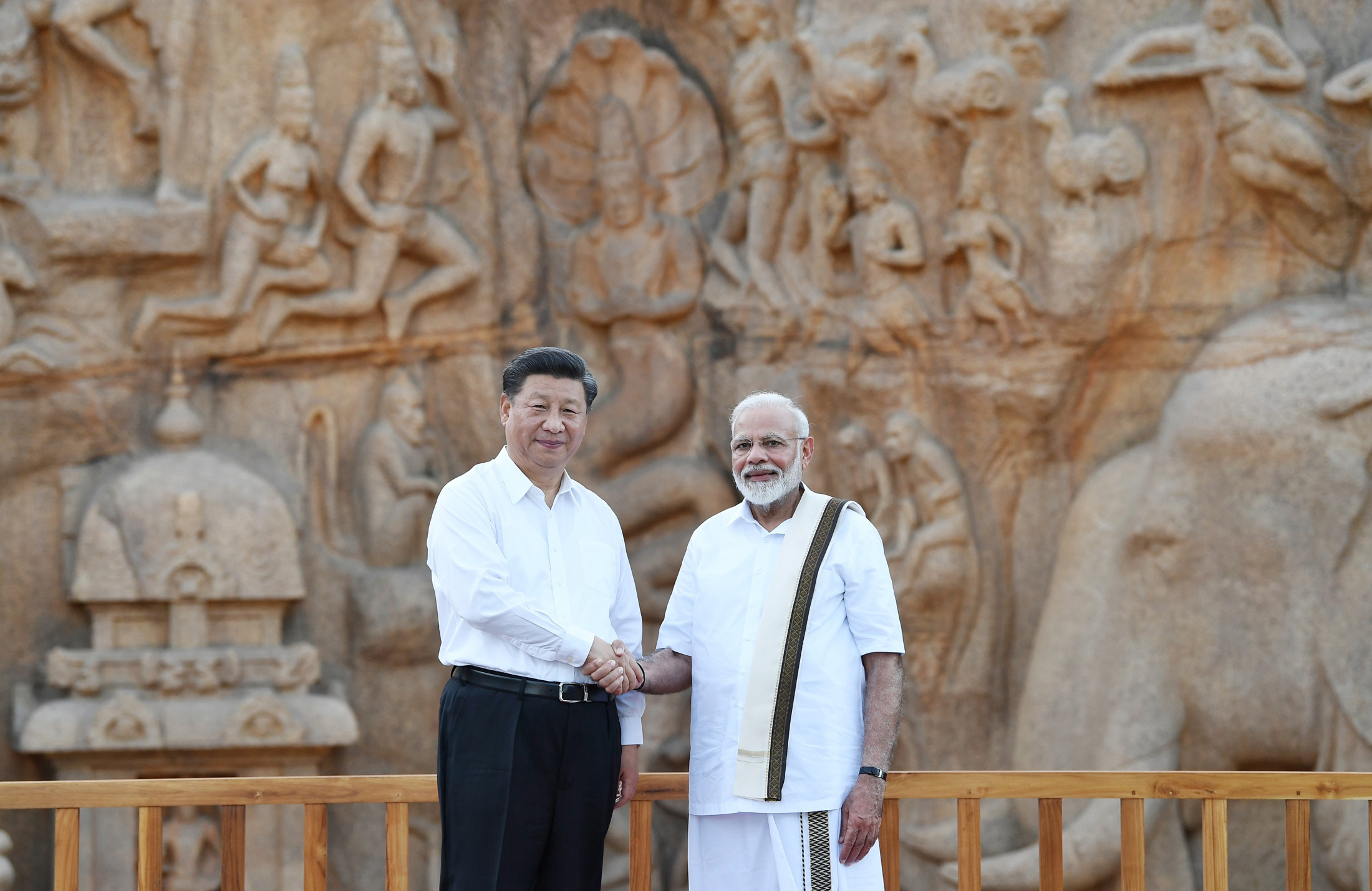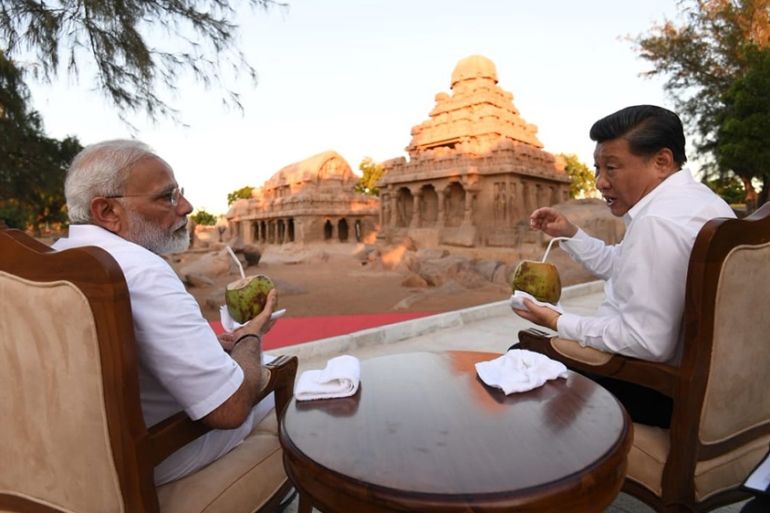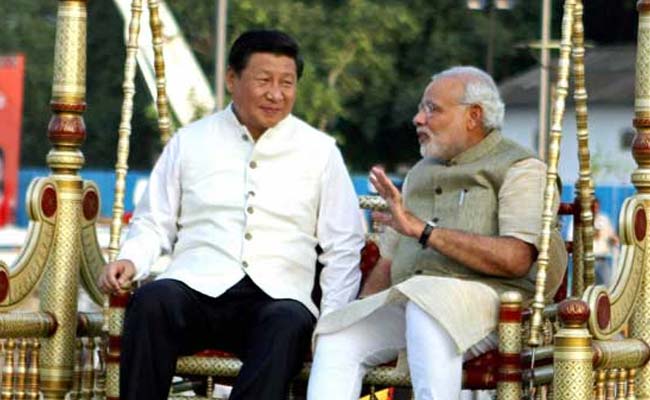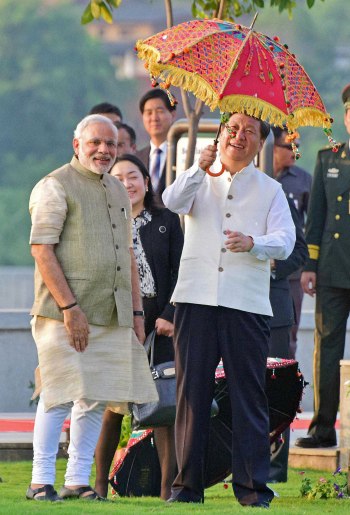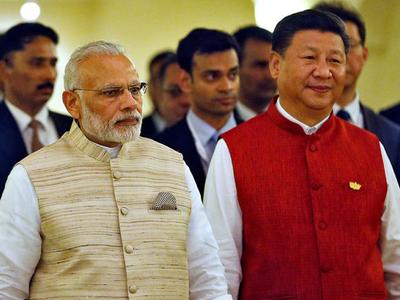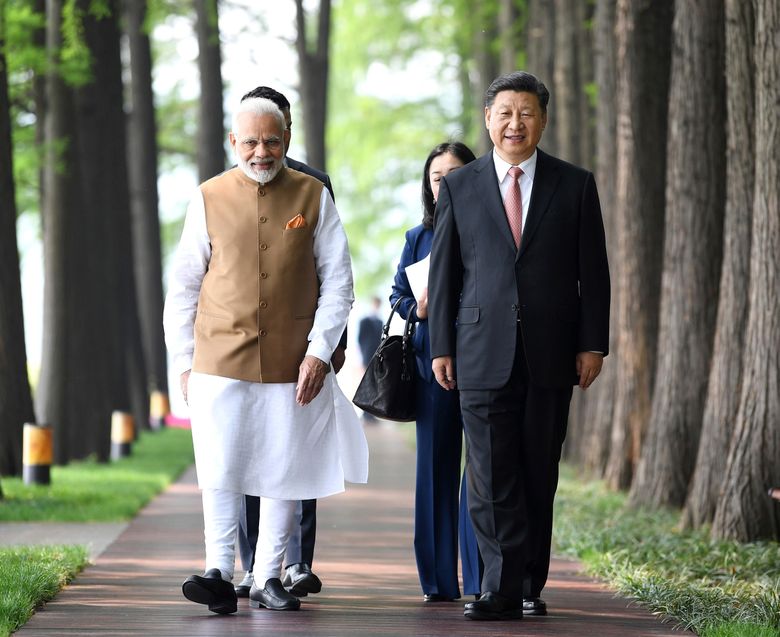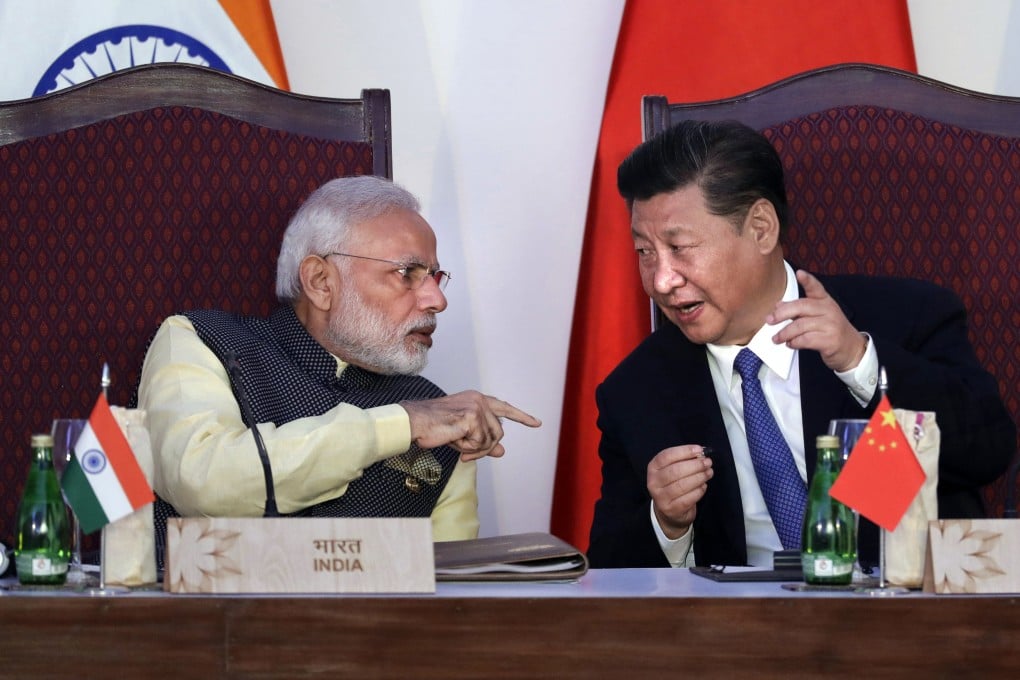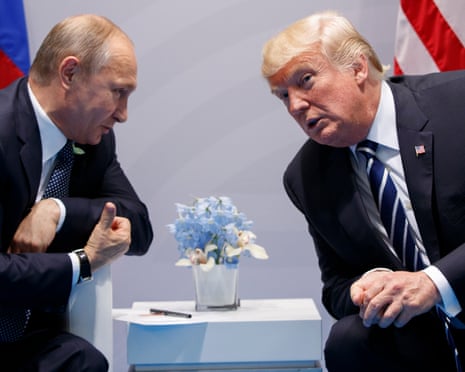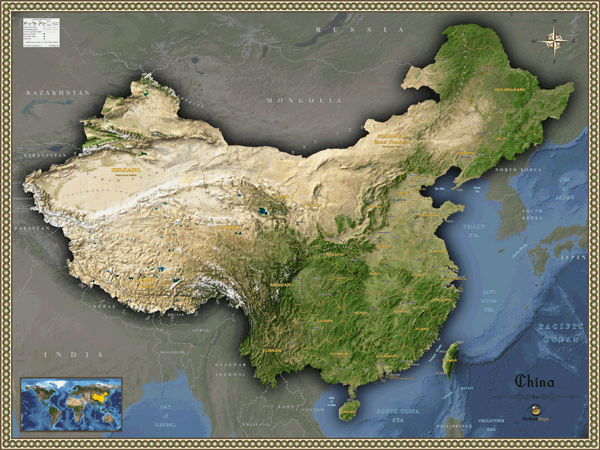India–China Border Settlement: A Nixon-to-China Moment for the 21st Century
Introduction
The unresolved border between India and China—the Line of Actual Control (LAC)—has long been one of the world’s most dangerous flashpoints. Skirmishes like the 1962 war or the 2020 Galwan clash have underscored how fragile peace can be in the Himalayas. Yet, if New Delhi and Beijing were to once and for all turn the LAC into the final recognized boundary and open it up for trade, it would mark a fundamental geopolitical realignment.
Much like Nixon’s visit to Beijing in 1972 reset the Cold War, an India–China rapprochement would reshape the global balance of power in the 21st century—not by forming rigid camps but by anchoring a multipolar order.
From Frontier to Border: The Historical Context
Historically, Tibet symbolized prosperity through frontiers rather than borders. Caravans carried wool, tea, and silk across Himalayan passes with minimal friction. Borders in the modern sense are colonial inventions. By converting today’s heavily militarized LAC into a stable frontier for trade, India and China would not only reduce tensions but also restore an older rhythm of commerce.
This would unlock opportunities for border states—Ladakh, Arunachal Pradesh, Sikkim, Tibet, and Xinjiang—turning them from garrisons into gateways of prosperity.
Economic Convergence and Synergy
In 1990, India and China were similar economies, each with a GDP of roughly $300 billion. Three decades later, China has surged ahead to nearly $18 trillion, while India is approaching $5 trillion. Despite this asymmetry, complementarities abound:
-
Capital vs. Labor: Chinese capital is abundant, but labor costs have risen sharply. India, meanwhile, still has a vast pool of low-cost labor. Relocating parts of China’s manufacturing ecosystem into India could echo the “China+1” strategy—but by Chinese choice rather than Western pressure.
-
FDI Flows: Massive Chinese FDI in Indian infrastructure, industrial parks, and logistics hubs could accelerate India’s growth while giving China a hedge against Western decoupling.
-
Market Integration: India offers China an alternative consumer base; China offers India a tested model of industrial clustering and export-led growth.
This synergy could generate an “Asian growth flywheel” to rival any Western or Japanese-led economic bloc.
Strategic Implications for the U.S. and the World
Critics may interpret India–China rapprochement as New Delhi “joining China’s camp.” That framing misses the point. This would not be an alliance of dependence, but a partnership of equals.
For the United States, this is not a shut door but an invitation to recalibrate. Washington must recognize that the 21st century is decidedly multipolar. In such an order:
-
Major powers improve relations with all others simultaneously.
-
Engagement is not zero-sum; one side’s gain need not be another’s loss.
-
Strategic autonomy becomes the norm.
If managed well, U.S. companies could still thrive in India, while India–China cooperation reduces global instability—something that benefits American security and trade.
Geopolitical Realignment: Toward a Multipolar Order
A stable India–China relationship would reshape Asian and global geopolitics in several ways:
-
Reduced Flashpoints: By settling the world’s longest disputed border, two nuclear powers would remove one of the great risks of conflict escalation.
-
Regional Integration: Open borders would facilitate greater South Asia–East Asia connectivity, making initiatives like the Bangladesh–China–India–Myanmar (BCIM) corridor viable.
-
Balanced Multipolarity: It would weaken the binary U.S.-China Cold War narrative, ensuring that India emerges not as a Western proxy but as an equal pole.
This is why the analogy to Nixon’s China gambit is apt—except this time it is not about pitting one against another, but about stabilizing the world through mutual recognition.
Conclusion
The settlement of the India–China border would be more than a diplomatic breakthrough; it would be a civilizational shift. By transforming a heavily militarized frontier into a frontier of trade, New Delhi and Beijing could unlock economic synergies unmatched anywhere else.
For India, this would mean accelerated industrialization and strategic autonomy. For China, it would mean labor cost optimization and a new strategic partner. For the world—including the United States—it would mean reduced tensions and greater opportunities in a truly multipolar system.
In short, India and China getting along is not a threat—it is a global public good. The 21st century may well be remembered as the moment when two ancient civilizations chose partnership over rivalry, and in doing so, set the world on a new trajectory of peace and prosperity.
भारत–चीन सीमा समाधान: 21वीं सदी का निक्सन-चीन क्षण
प्रस्तावना
भारत और चीन के बीच अनसुलझी सीमा—वास्तविक नियंत्रण रेखा (LAC)—लंबे समय से विश्व के सबसे खतरनाक तनाव बिंदुओं में से एक रही है। 1962 के युद्ध से लेकर 2020 के गलवान संघर्ष तक, हर झड़प ने दिखाया है कि हिमालय में शांति कितनी नाजुक है। लेकिन यदि नई दिल्ली और बीजिंग एक बार और हमेशा के लिए LAC को अंतिम मान्य सीमा मान लें और उसे व्यापार के लिए खोल दें, तो यह वैश्विक भू-राजनीति में एक मौलिक पुनर्संरेखण होगा।
जिस तरह 1972 में निक्सन की बीजिंग यात्रा ने शीत युद्ध को पुनः परिभाषित किया था, उसी तरह भारत–चीन का यह मेल-मिलाप 21वीं सदी की शक्ति-संतुलन को बदल देगा—न कि कठोर खेमों में बँटकर, बल्कि एक बहुध्रुवीय व्यवस्था को मजबूत करके।
सीमा से सीमांत तक: ऐतिहासिक परिप्रेक्ष्य
इतिहास में तिब्बत समृद्धि का प्रतीक था, जहाँ सीमांत थे, कठोर सीमाएँ नहीं। ऊनी कपड़ा, चाय और रेशम की कारवाँ हिमालयी दर्रों से न्यूनतम रुकावटों के साथ गुजरते थे। आधुनिक सीमा की अवधारणा उपनिवेशवाद की देन है।
यदि आज की भारी सैन्यीकृत LAC को एक स्थिर व्यापारिक सीमांत में बदला जाए, तो न केवल तनाव कम होगा, बल्कि समृद्धि की ऐतिहासिक धारा फिर से बहने लगेगी। इससे सीमा-प्रदेश—लद्दाख, अरुणाचल प्रदेश, सिक्किम, तिब्बत और शिनजियांग—सैन्य चौकियों से समृद्धि के प्रवेशद्वार बन सकते हैं।
आर्थिक संगम और सामंजस्य
1990 में भारत और चीन की अर्थव्यवस्थाएँ लगभग समान थीं—दोनों का जीडीपी लगभग 300 अरब डॉलर था। तीन दशक बाद चीन लगभग 18 ट्रिलियन डॉलर तक पहुँच गया है, जबकि भारत 5 ट्रिलियन डॉलर की ओर बढ़ रहा है। इस विषमता के बावजूद, दोनों में गहरी पूरकता है:
-
पूँजी बनाम श्रम: चीन के पास प्रचुर पूँजी है, लेकिन श्रम महँगा हो गया है। भारत के पास अभी भी सस्ते श्रम का विशाल भंडार है। चीन अपने विनिर्माण का एक बड़ा हिस्सा भारत में स्थानांतरित कर सकता है—अपने ही निर्णय से, पश्चिमी दबाव से नहीं।
-
प्रत्यक्ष विदेशी निवेश (FDI): भारत के बुनियादी ढाँचे, औद्योगिक क्षेत्रों और लॉजिस्टिक्स में भारी चीनी निवेश भारत की वृद्धि तेज कर सकता है, साथ ही चीन को पश्चिमी "डिकप्लिंग" से सुरक्षा भी देगा।
-
बाज़ार एकीकरण: भारत चीन को वैकल्पिक उपभोक्ता बाज़ार देगा; चीन भारत को औद्योगिक क्लस्टरिंग और निर्यात-आधारित विकास का आज़माया हुआ मॉडल देगा।
यह सामंजस्य एक “एशियाई विकास चक्र” पैदा कर सकता है, जो किसी भी पश्चिमी या जापानी आर्थिक ब्लॉक के बराबर होगा।
अमेरिका और विश्व के लिए रणनीतिक निहितार्थ
कुछ आलोचक भारत–चीन सामंजस्य को भारत के “चीन खेमे में जाने” की तरह देख सकते हैं। यह दृष्टिकोण अधूरा है। यह निर्भरता का गठबंधन नहीं होगा, बल्कि बराबरी की साझेदारी होगी।
अमेरिका के लिए यह दरवाज़ा बंद नहीं बल्कि पुनर्संतुलन का अवसर है। वॉशिंगटन को मानना होगा कि 21वीं सदी निस्संदेह बहुध्रुवीय है। ऐसी व्यवस्था में:
-
बड़ी शक्तियाँ एक-दूसरे के साथ समानांतर रूप से संबंध सुधारती हैं।
-
संलग्नता शून्य-योग नहीं है; एक की जीत दूसरे की हार नहीं।
-
रणनीतिक स्वायत्तता सामान्य बन जाती है।
यदि इसे सही ढंग से संभाला गया, तो अमेरिकी कंपनियाँ भारत में फल-फूल सकती हैं, जबकि भारत–चीन सहयोग वैश्विक अस्थिरता को कम करेगा—जो अमेरिकी सुरक्षा और व्यापार के लिए भी लाभकारी है।
भू-राजनीतिक पुनर्संरेखण: बहुध्रुवीय व्यवस्था की ओर
एक स्थिर भारत–चीन संबंध एशिया और वैश्विक भू-राजनीति को कई तरीकों से बदल देगा:
-
तनाव में कमी: दुनिया की सबसे लंबी विवादित सीमा के समाधान से दो परमाणु शक्तियों के बीच संघर्ष का खतरा घट जाएगा।
-
क्षेत्रीय एकीकरण: सीमा खोलने से दक्षिण एशिया–पूर्वी एशिया संपर्क बेहतर होगा, जिससे बांग्लादेश–चीन–भारत–म्यांमार (BCIM) कॉरिडोर जैसे प्रोजेक्ट संभव हो सकेंगे।
-
संतुलित बहुध्रुवीयता: यह अमेरिका–चीन शीत युद्ध की द्विध्रुवीय कथा को कमजोर करेगा और सुनिश्चित करेगा कि भारत पश्चिम का प्रॉक्सी नहीं बल्कि एक स्वतंत्र ध्रुव बने।
इसीलिए निक्सन–चीन तुलना उचित है—फर्क बस इतना है कि इस बार यह एक को दूसरे के खिलाफ खड़ा करने का मामला नहीं, बल्कि परस्पर मान्यता के ज़रिए दुनिया को स्थिर करने का प्रयास है।
निष्कर्ष
भारत–चीन सीमा का समाधान केवल एक राजनयिक सफलता नहीं होगा; यह एक सभ्यतागत बदलाव होगा। भारी सैन्यीकृत सीमांत को व्यापारिक सीमांत में बदलकर, नई दिल्ली और बीजिंग ऐसी आर्थिक ऊर्जा खोल सकते हैं, जिसकी कोई मिसाल नहीं है।
भारत के लिए, इसका अर्थ होगा तीव्र औद्योगीकरण और रणनीतिक स्वायत्तता। चीन के लिए, इसका अर्थ होगा श्रम लागत का समाधान और नया रणनीतिक साझेदार। और विश्व के लिए—जिसमें अमेरिका भी शामिल है—इसका अर्थ होगा तनाव में कमी और अधिक अवसरों से भरी बहुध्रुवीय व्यवस्था।
संक्षेप में, भारत और चीन का एक-दूसरे से मेल-मिलाप कोई ख़तरा नहीं, बल्कि वैश्विक सार्वजनिक हित है। 21वीं सदी को शायद इस रूप में याद किया जाएगा कि जब दो प्राचीन सभ्यताओं ने प्रतिस्पर्धा की बजाय साझेदारी को चुना और ऐसा करके, शांति और समृद्धि की नई दिशा तय की।
From Frontiers to Borders: Why It’s Time for India and China to Settle the LAC
Introduction
Borders are not timeless; they are products of modern statecraft. Several centuries ago, the Himalayas were defined not by razor-wire fences or patrolled checkpoints but by frontiers. A traveler leaving the last Nepali hamlet could walk for tens of miles before arriving at the first Tibetan settlement. In that in-between space, no one thought of “ownership.” You had simply left Nepal, and only when you entered Tibet were you in another realm. Borders in the modern sense—fixed, surveyed, militarized—are relatively new concepts, born out of imperial cartography.
Today, the disputed Line of Actual Control (LAC) between India and China is one of the world’s most contested frontiers. Turning it into a recognized border, with minor adjustments, is not just overdue but strategically essential in the 21st century.
The Historical Gripe: China’s Perspective
When the People’s Republic of China emerged in 1949, one of its long-standing complaints was that its boundaries with India had been unfairly drawn by the British Raj. The McMahon Line of 1914, part of the Simla Convention between British India, Tibet, and China, was seen by Beijing as illegitimate—an imperial imposition on a weak Tibet that it never recognized.
From Beijing’s perspective, colonial powers had taken liberties in the Himalayas, drawing lines on maps that ignored ground realities, local communities, and cultural continuities. This grievance carried into modern Chinese statecraft, fueling its rejection of the Indian border as “unfair and unfinished.”
The Indian View: Betrayal and Broken Aspirations
For India, which had only recently gained independence, relations with China carried a sense of idealism. Jawaharlal Nehru envisioned India and China standing shoulder to shoulder on the global stage as leaders of the postcolonial world.
The 1962 war shattered this dream. To India, China’s attack appeared unprovoked—a betrayal that undermined hopes of Asian solidarity. What India considered legitimate borders, inherited from the British, China dismissed as colonial frauds. This clash of narratives continues to haunt bilateral relations, producing decades of mistrust.
Why the LAC Should Become the Final Border
In today’s age of satellite imagery, GPS surveying, and real-time mapping, arguments over ambiguous boundaries are increasingly untenable. The LAC, though not formally recognized, already functions as the de facto border.
Key Reasons for Settlement:
-
Clarity and Stability: Both nations need a final demarcation to prevent clashes like Galwan (2020), which destabilize the entire Asian region.
-
Minor Adjustments Possible: With modern cartography, small land swaps can address local sensitivities without disrupting the larger settlement.
-
Unlocking Economic Synergies: A settled border opens doors for trade across the Himalayas, reviving the frontier’s historical role as a bridge, not a barrier.
-
Strategic Realignment: Ending the border dispute would reduce military expenditures on both sides and allow India and China to redirect resources toward economic growth and global engagement.
Toward a Post-Frontier Future
Turning the LAC into the official, recognized boundary would be a recognition of reality: what functionally exists must be formally acknowledged. It would not erase history—colonial cartography, the 1962 war, or decades of mistrust—but it would transform the future.
Just as frontiers once allowed cultural and economic flows between Nepal and Tibet, a demilitarized, open border could allow India and China to build prosperity together. In a multipolar world, the choice is not confrontation but cooperation.
Conclusion
The India–China border dispute is, at its core, a clash between colonial legacies and postcolonial aspirations. Yet technology, geopolitics, and economic necessity now point in one direction: the LAC must become the final border, with minor negotiated swaps.
Settling this issue would not only reduce one of Asia’s most dangerous flashpoints but also open a new chapter of collaboration between the world’s two most populous nations. The time when borders were drawn in imperial boardrooms is long gone; today, they must be settled by sovereign equals, in the spirit of partnership and peace.
सीमांत से सीमा तक: क्यों अब समय आ गया है कि भारत और चीन LAC को अंतिम सीमा मानें
प्रस्तावना
सीमाएँ शाश्वत नहीं होतीं; वे आधुनिक राज्य-व्यवस्था की उपज हैं। कई शताब्दियों पहले हिमालय को काँटेदार तारों या चौकियों से नहीं, बल्कि सीमान्त से परिभाषित किया जाता था। कोई यात्री यदि नेपाल के अंतिम गाँव से निकलता तो वह कई मीलों तक चलता और जब तिब्बत के पहले गाँव में पहुँचता, तभी माना जाता कि वह किसी दूसरे क्षेत्र में प्रवेश कर गया है। बीच का हिस्सा “मालिकाना” अधिकार का नहीं, बल्कि खुला सीमांत था। आधुनिक अर्थ में निश्चित, नापे-तौले और सैन्यीकृत सीमाएँ उपनिवेशवाद की देन हैं।
आज भारत–चीन के बीच की विवादित वास्तविक नियंत्रण रेखा (LAC) दुनिया के सबसे संवेदनशील सीमांतों में से एक है। इसे मान्यता प्राप्त अंतिम सीमा बनाना—कुछ छोटे-मोटे भू-समायोजन के साथ—अब केवल संभावना नहीं, बल्कि 21वीं सदी की रणनीतिक आवश्यकता है।
ऐतिहासिक शिकायत: चीन का दृष्टिकोण
1949 में जनवादी गणराज्य चीन की स्थापना के बाद से ही उसका एक पुराना आरोप रहा है कि भारत के साथ उसकी सीमा ब्रिटिश राज ने अन्यायपूर्ण तरीके से खींची थी। 1914 के सिमला समझौते के अंतर्गत बनी मैकमहन रेखा को बीजिंग ने कभी वैध नहीं माना।
चीन के दृष्टिकोण से, औपनिवेशिक शक्तियों ने हिमालय में मनमाने ढंग से रेखाएँ खींचीं, जिन्होंने स्थानीय समुदायों, सांस्कृतिक निरंतरता और भौगोलिक वास्तविकताओं की अनदेखी की। इसलिए चीन ने भारतीय सीमा को “अन्यायपूर्ण और अधूरी” बताकर अस्वीकार किया।
भारतीय दृष्टिकोण: विश्वासघात और टूटा सपना
भारत के लिए, जिसने हाल ही में स्वतंत्रता प्राप्त की थी, चीन के साथ संबंध आदर्शवाद से भरे हुए थे। पंडित जवाहरलाल नेहरू भारत और चीन को विश्व मंच पर कंधे से कंधा मिलाकर खड़ा देखना चाहते थे।
लेकिन 1962 के युद्ध ने यह सपना तोड़ दिया। भारत की दृष्टि में, चीन का आक्रमण बिना किसी उकसावे के विश्वासघात था, जिसने एशियाई एकता की आशाओं को नष्ट कर दिया। भारत ने जो सीमाएँ ब्रिटिश से विरासत में पाईं, उन्हें वैध माना; पर चीन ने उन्हें औपनिवेशिक छल मानकर अस्वीकार कर दिया। यही विरोधाभासी कथाएँ दोनों देशों के बीच दशकों से अविश्वास की जड़ बनीं।
क्यों LAC को अंतिम सीमा बनाया जाना चाहिए
आज उपग्रह तकनीक, GPS सर्वेक्षण और वास्तविक समय की मैपिंग के युग में अस्पष्ट सीमाओं पर विवाद टिकाऊ नहीं है। LAC भले औपचारिक रूप से मान्य न हो, लेकिन व्यवहार में यह पहले से ही सीमा का काम कर रही है।
प्रमुख कारण:
-
स्पष्टता और स्थिरता: गालवान (2020) जैसी घटनाओं को रोकने के लिए अंतिम सीमांकन आवश्यक है।
-
छोटे भू-समायोजन संभव: आधुनिक नक्शानवीसी के माध्यम से स्थानीय संवेदनशीलताओं को ध्यान में रखते हुए छोटे भू-समायोजन किए जा सकते हैं।
-
आर्थिक अवसरों का द्वार: स्थिर सीमा खुलने पर हिमालय पुनः व्यापारिक सेतु बन सकता है, जैसा वह ऐतिहासिक रूप से था।
-
रणनीतिक पुनर्संरेखण: विवाद सुलझने से दोनों देश अपनी सैन्य खर्चों को कम कर आर्थिक विकास और वैश्विक सहयोग में निवेश कर सकते हैं।
सीमांत के बाद का भविष्य
LAC को आधिकारिक और मान्यता प्राप्त सीमा बनाना वास्तविकता को स्वीकार करना है—जो व्यवहार में मौजूद है, उसे औपचारिक बनाना। यह इतिहास को नहीं मिटाएगा—न उपनिवेशवादी नक्शानवीसी, न 1962 का युद्ध और न ही दशकों का अविश्वास—लेकिन यह भविष्य को बदल देगा।
जिस तरह नेपाल और तिब्बत के बीच का सीमांत कभी सांस्कृतिक और आर्थिक प्रवाह को आसान बनाता था, उसी तरह भारत और चीन के बीच एक खुली और असैन्यीकृत सीमा साझी समृद्धि का मार्ग बना सकती है।
निष्कर्ष
भारत–चीन सीमा विवाद मूल रूप से औपनिवेशिक विरासत और स्वतंत्रोत्तर आकांक्षाओं के बीच का टकराव है। लेकिन आज की तकनीक, भू-राजनीतिक स्थिति और आर्थिक आवश्यकता सब एक ही दिशा की ओर इशारा करती हैं: LAC को अंतिम सीमा मानना ही होगा—कुछ छोटे-मोटे समझौतों के साथ।
यह न केवल एशिया के सबसे खतरनाक विवादों में से एक को समाप्त करेगा बल्कि दुनिया की दो सबसे बड़ी जनसंख्या वाले राष्ट्रों के बीच सहयोग का नया अध्याय भी खोलेगा। सीमाएँ अब उपनिवेशवादी बोर्डरूम में नहीं खींची जानी चाहिएं; उन्हें स्वतंत्र राष्ट्रों द्वारा बराबरी और साझेदारी की भावना से तय किया जाना चाहिए।
Policy Brief: From Frontiers to Borders — Why It’s Time for India and China to Settle the LAC
Executive Summary
The India–China border dispute, rooted in colonial cartography and postcolonial mistrust, remains one of Asia’s most dangerous flashpoints. Yet, with today’s technology, economic interdependence, and geopolitical realities, there is an urgent need to formalize the Line of Actual Control (LAC) into a recognized international boundary.
This policy brief explores the historical context, current risks, economic opportunities, and strategic implications of a settlement. It argues that a final border agreement would not signify alignment of India with China, but rather a mutual recognition of sovereignty that strengthens multipolar stability.
1. Historical Background: From Frontier to Border
-
Pre-Modern Frontiers: For centuries, the Himalayas were defined by cultural and trading frontiers rather than hard borders. A traveler leaving a Nepali hamlet and arriving at a Tibetan village simply passed through open space.
-
Colonial Cartography: The British Raj introduced fixed borders, most controversially the McMahon Line (1914). China rejected it as an imperial imposition.
-
Post-Independence Expectations: India, under Nehru, envisioned solidarity with China. The 1962 war, however, marked a collapse of trust.
Lesson: The dispute is not just about land but about clashing narratives—colonial injustice for China, betrayal and aggression for India.
2. The Current Reality: A Dangerous Ambiguity
Military Risks
-
Skirmishes: The 2020 Galwan clash demonstrated how ambiguous patrol rights can escalate into deadly confrontations.
-
Escalation Potential: Both sides are nuclear powers with large standing armies; any miscalculation has regional consequences.
Political Costs
-
Distrust: The unresolved border blocks broader cooperation in multilateral forums (BRICS, SCO).
-
Domestic Pressures: Nationalist sentiment in both countries constrains political flexibility.
3. Why Settlement is Urgent
-
Technological Precision: With satellite imagery and GPS, modern states can fix boundaries with unparalleled accuracy.
-
Economic Opportunity:
-
Strategic Stability:
-
Global Multipolarity:
4. Possible Pathways to Settlement
(a) Status Quo
-
Maintain the LAC as it is, without formal recognition.
-
Risks: recurring clashes, mistrust, wasted military resources.
(b) Partial Settlement
-
Sector-by-sector agreements (e.g., eastern sector first).
-
Confidence-building: joint development zones, shared patrolling protocols.
-
Risks: may drag on, leaving key flashpoints unresolved.
(c) Full Settlement (Preferred)
-
Convert LAC into final border, with minor land swaps.
-
Demilitarize sensitive stretches; open controlled trade routes.
-
Long-term security guarantees (non-aggression pact).
5. Economic Implications
For India
-
FDI Inflows: Chinese investment in infrastructure, manufacturing, and logistics could accelerate India’s industrialization.
-
Export Growth: Indian pharmaceuticals, IT services, and agriculture could gain access to Chinese markets.
For China
-
Labor Diversification: Rising Chinese labor costs can be offset by shifting operations to India.
-
Market Access: India’s growing consumer base (soon the world’s largest middle class) offers a hedge against Western decoupling.
For the Region
-
South Asia–East Asia Integration: Corridors like BCIM (Bangladesh–China–India–Myanmar) become viable.
-
Revival of Border Economies: Ladakh, Arunachal, Tibet, and Xinjiang could become trading gateways instead of military outposts.
6. Strategic Implications
For India
For China
For the U.S.
-
A multipolar world is not zero-sum: stable India–China relations mean fewer flashpoints.
-
American firms can still thrive in India; U.S.–India strategic partnership can continue in tech, defense, and Indo-Pacific security.
7. Policy Recommendations
For India
-
Signal readiness for boundary settlement without compromising sovereignty.
-
Prepare domestic narrative: settlement as a “peace dividend” that accelerates growth.
-
Link settlement to greater access for Indian exports in Chinese markets.
For China
-
Publicly acknowledge historical sensitivities in India.
-
Offer FDI packages tied to border stability.
-
Commit to military disengagement as confidence-building.
For Both
-
Establish a Joint Boundary Commission with satellite-based mapping.
-
Create demilitarized trade corridors across agreed border passes.
-
Draft a Non-Aggression Treaty as part of final settlement.
Conclusion
The India–China border dispute is a relic of colonialism and Cold War mistrust. In today’s multipolar world, clinging to ambiguous lines is strategically self-defeating. By recognizing the LAC as the final border, with negotiated adjustments, India and China can transform their frontier from a flashpoint into a bridge of prosperity.
This is not about one country joining the other’s camp—it is about both stepping into a future of mutual recognition, economic synergy, and global stability.
If 1972 was Nixon’s China moment, then 2025–2030 could be India’s China moment: the beginning of a post-frontier Asia.
नीति संक्षेप: सीमांत से सीमा तक — क्यों अब समय आ गया है कि भारत और चीन LAC को अंतिम सीमा मानें
कार्यकारी सारांश
भारत–चीन सीमा विवाद, जो औपनिवेशिक नक्शानवीसी और स्वतंत्रोत्तर अविश्वास में निहित है, एशिया के सबसे खतरनाक तनाव बिंदुओं में से एक बना हुआ है। लेकिन आज की तकनीक, आर्थिक पारस्परिकता और भू-राजनीतिक वास्तविकताओं के साथ, यह आवश्यक हो गया है कि वास्तविक नियंत्रण रेखा (LAC) को औपचारिक और मान्यता प्राप्त अंतर्राष्ट्रीय सीमा बना दिया जाए।
यह नीति संक्षेप ऐतिहासिक पृष्ठभूमि, मौजूदा जोखिम, आर्थिक अवसर और रणनीतिक प्रभावों की पड़ताल करता है। इसमें तर्क दिया गया है कि अंतिम सीमा समझौता भारत के चीन के साथ जुड़ने का संकेत नहीं होगा, बल्कि संप्रभुता की पारस्परिक मान्यता होगी जो बहुध्रुवीय स्थिरता को मजबूत करेगी।
1. ऐतिहासिक पृष्ठभूमि: सीमांत से सीमा तक
-
पूर्व-आधुनिक सीमांत: सदियों तक हिमालय को कठोर सीमाओं से नहीं, बल्कि सांस्कृतिक और व्यापारिक सीमांतों से परिभाषित किया गया। नेपाल के अंतिम गाँव से निकलने वाला यात्री तिब्बत के पहले गाँव तक खुले क्षेत्र से होकर गुजरता था।
-
औपनिवेशिक नक्शानवीसी: ब्रिटिश राज ने निश्चित सीमाएँ बनाई, सबसे विवादास्पद मैकमहन रेखा (1914)। चीन ने इसे औपनिवेशिक थोपने के रूप में खारिज कर दिया।
-
स्वतंत्रोत्तर अपेक्षाएँ: भारत, नेहरू के नेतृत्व में, चीन के साथ वैश्विक स्तर पर एकजुटता चाहता था। लेकिन 1962 का युद्ध भरोसे के पतन का प्रतीक बना।
सबक: यह विवाद केवल भूमि का नहीं, बल्कि दो अलग-अलग कथाओं का है—चीन के लिए औपनिवेशिक अन्याय, भारत के लिए विश्वासघात और आक्रमण।
2. मौजूदा वास्तविकता: एक खतरनाक अस्पष्टता
सैन्य जोखिम
-
झड़पें: 2020 का गालवान संघर्ष दिखाता है कि अस्पष्ट गश्ती अधिकार घातक टकराव में बदल सकते हैं।
-
विस्तार की संभावना: दोनों देश परमाणु शक्ति हैं और बड़ी सेनाएँ रखते हैं; कोई भी गलत आकलन क्षेत्रीय आपदा ला सकता है।
राजनीतिक लागत
-
अविश्वास: अनसुलझी सीमा व्यापक सहयोग (जैसे BRICS, SCO) को बाधित करती है।
-
घरेलू दबाव: दोनों देशों में राष्ट्रवाद राजनीतिक लचीलापन सीमित करता है।
3. क्यों समाधान आवश्यक है
-
प्रौद्योगिकीय स्पष्टता: उपग्रह चित्रण और GPS से सीमाएँ सटीक रूप से तय की जा सकती हैं।
-
आर्थिक अवसर:
-
रणनीतिक स्थिरता:
-
वैश्विक बहुध्रुवीयता:
4. समाधान के संभावित मार्ग
(a) यथास्थिति
-
LAC को बिना औपचारिक मान्यता के बनाए रखना।
-
जोखिम: बार-बार टकराव, अविश्वास, व्यर्थ सैन्य संसाधन।
(b) आंशिक समाधान
-
क्षेत्रवार समझौते (जैसे पूर्वी सेक्टर पहले)।
-
विश्वास निर्माण: साझा गश्त प्रोटोकॉल, संयुक्त विकास क्षेत्र।
-
जोखिम: लंबे समय तक अधूरा रह सकता है।
(c) पूर्ण समाधान (सर्वोत्तम विकल्प)
-
LAC को अंतिम सीमा मानना, कुछ छोटे भू-समायोजन के साथ।
-
संवेदनशील क्षेत्रों का अर्द्ध-निर्मिलीकरण; नियंत्रित व्यापार मार्ग खोलना।
-
दीर्घकालिक सुरक्षा गारंटी (अनाक्रमण संधि)।
5. आर्थिक प्रभाव
भारत के लिए
-
FDI: चीन का बुनियादी ढाँचे और विनिर्माण में निवेश औद्योगिकीकरण तेज करेगा।
-
निर्यात वृद्धि: भारत की फार्मा, IT और कृषि को चीनी बाज़ार तक पहुँच मिलेगी।
चीन के लिए
क्षेत्र के लिए
-
दक्षिण एशिया–पूर्वी एशिया एकीकरण: BCIM (बांग्लादेश–चीन–भारत–म्यांमार) कॉरिडोर व्यवहार्य होगा।
-
सीमावर्ती अर्थव्यवस्था का पुनर्जागरण: लद्दाख, अरुणाचल, तिब्बत, शिनजियांग सैन्य चौकियों से व्यापारिक द्वार बनेंगे।
6. रणनीतिक प्रभाव
भारत के लिए
चीन के लिए
अमेरिका के लिए
7. नीति सिफारिशें
भारत के लिए
-
संप्रभुता से समझौता किए बिना सीमा समाधान की तत्परता दिखाए।
-
घरेलू कथा तैयार करे: इसे “शांति लाभांश” के रूप में प्रस्तुत करे।
-
सीमा समाधान को भारतीय निर्यात की चीनी बाज़ार तक पहुँच से जोड़े।
चीन के लिए
-
भारत की ऐतिहासिक संवेदनशीलताओं को स्वीकार करे।
-
FDI पैकेज सीमा स्थिरता से जोड़े।
-
विश्वास निर्माण के लिए सैन्य डिसइंगेजमेंट करे।
दोनों देशों के लिए
-
संयुक्त सीमा आयोग बनाए जो उपग्रह आधारित नक्शानवीसी करे।
-
सीमा-पार व्यापारिक गलियारे स्थापित करे।
-
अनाक्रमण संधि पर हस्ताक्षर करे।
निष्कर्ष
भारत–चीन सीमा विवाद उपनिवेशवाद और शीतयुद्ध के अविश्वास का अवशेष है। बहुध्रुवीय दुनिया में अस्पष्ट रेखाओं पर टिके रहना आत्मघाती है। LAC को कुछ समायोजनों के साथ अंतिम सीमा मानना दोनों देशों के लिए लाभकारी है।
यह न तो भारत का चीन के खेमे में जाना है, न ही चीन का भारत पर हावी होना—यह समानता, आर्थिक सहयोग और वैश्विक स्थिरता की ओर कदम है।
यदि 1972 निक्सन का “चीन क्षण” था, तो 2025–2030 भारत का “चीन क्षण” हो सकता है: सीमांत को सीमा में बदलने और एशिया के नए अध्याय की शुरुआत करने का।
Research Report: India–China Border Settlement and Its Global Implications
Executive Summary
This report examines the implications of three possible scenarios regarding the Line of Actual Control (LAC):
-
Status Quo (No Settlement)
-
Partial Settlement (Sectoral or Interim Arrangements)
-
Full Settlement (Formal Border Agreement with Minor Swaps)
Using comparative defense spending, trade flows, and growth models, we project outcomes for India, China, and the global system. The analysis shows that a full settlement could yield up to $150–200 billion in economic gains for India and $250–300 billion for China over 10 years, while cutting defense risks and contributing to multipolar stability.
1. Scenario Framework
Scenario A: Status Quo
-
Ambiguity persists; periodic clashes (Galwan-type incidents).
-
Military deployments remain high (~$12–15B annually for India; ~$20B for China).
-
Trade limited; border states militarized.
Scenario B: Partial Settlement
-
Sectoral demarcation (eastern or western sector first).
-
Confidence-building measures (joint patrolling, disengagement zones).
-
Some trade routes open, but limited.
-
Savings in defense modest (~10–15%).
Scenario C: Full Settlement
-
LAC becomes the final boundary, with minor land swaps.
-
Comprehensive disengagement, demilitarized zones, open trade corridors.
-
Major economic integration, Chinese FDI surge into India.
-
Long-term savings in defense (~25–30%).
2. Economic Simulations
Defense Budget Impact
| Country |
Current Border Deployment Costs |
Savings Under Partial Settlement |
Savings Under Full Settlement |
| India |
~$12–15B annually |
$2–3B |
$4–5B annually |
| China |
~$20B annually |
$3–4B |
$6–7B annually |
Implication: Over 10 years, India saves ~$40B, China ~$70B under full settlement.
Trade & Investment Impact
| Indicator |
Status Quo |
Partial Settlement |
Full Settlement |
| Bilateral Trade (2025 baseline: $136B) |
$150B by 2035 |
$200B by 2035 |
$350B by 2035 |
| Chinese FDI into India |
~$2B annually |
$5–7B annually |
$20–25B annually |
| Indian Exports to China |
$20B baseline |
$35–40B |
$80–100B |
Implication: Full settlement triples bilateral trade within a decade, with India gaining massive export access and China diversifying supply chains.
GDP Growth Impact (10-Year Horizon)
| Country |
Status Quo |
Partial Settlement |
Full Settlement |
| India |
+6.0% avg |
+6.3% avg |
+6.8–7.0% avg |
| China |
+4.5% avg |
+4.7% avg |
+5.0–5.2% avg |
Implication: India gains an extra 1% growth over a decade — compounding into trillions in GDP.
3. Strategic & Geopolitical Simulations
India
-
Status Quo: remains reliant on U.S. for balancing China.
-
Partial Settlement: some autonomy, but mistrust persists.
-
Full Settlement: enhanced strategic autonomy, greater role in BRICS, SCO, and multipolar world.
China
-
Status Quo: western frontier remains unstable, tying down PLA resources.
-
Partial Settlement: reduced tensions, but vulnerabilities remain.
-
Full Settlement: stable land frontier allows Beijing to concentrate on maritime Indo-Pacific challenges.
U.S.
-
Status Quo: leverages India as a counterweight to China.
-
Partial Settlement: less leverage, but still influential.
-
Full Settlement: multipolar balance reduces U.S. dominance, but opens new stable trade channels benefiting American firms.
4. Policy Recommendations
For India
-
Link border settlement to a grand bargain on trade & FDI.
-
Frame settlement as “peace dividend” to domestic audience.
-
Build infrastructure in border states to turn them into trade hubs.
For China
-
Offer large FDI packages and market access to India.
-
Publicly recognize India’s equal role in multipolar Asia.
-
Pair settlement with non-aggression treaty and troop withdrawals.
For Both
-
Establish a Joint Boundary Commission with satellite-mapping authority.
-
Demilitarize at least 3 key Himalayan passes into trade routes.
-
Create an India–China Development Fund ($50B+) for joint projects.
Conclusion
The India–China border dispute is one of the last unresolved legacies of colonial cartography. Modern technology and multipolar geopolitics make settlement not just desirable but necessary.
A full settlement of the LAC would:
-
Save $100B+ in defense costs over a decade,
-
Unlock $500B+ in bilateral trade potential,
-
Transform the Himalayan frontier into a corridor of prosperity.
This is not about India joining China, or vice versa — it is about two civilizational powers choosing stability over suspicion.
The world remembered 1972 as Nixon’s “China moment.” The 2025–2030 decade could be remembered as India’s China moment — when Asia buried its colonial boundaries and embraced its multipolar destiny.
शोध रिपोर्ट: भारत–चीन सीमा समाधान और इसके वैश्विक निहितार्थ
कार्यकारी सारांश
यह रिपोर्ट वास्तविक नियंत्रण रेखा (LAC) से जुड़े तीन संभावित परिदृश्यों के निहितार्थों का अध्ययन करती है:
-
यथास्थिति (कोई समाधान नहीं)
-
आंशिक समाधान (क्षेत्रीय या अंतरिम व्यवस्था)
-
पूर्ण समाधान (सीमा समझौता और छोटे भू-समायोजन)
रक्षा व्यय, व्यापार प्रवाह और वृद्धि मॉडल का तुलनात्मक विश्लेषण दिखाता है कि पूर्ण समाधान से भारत को 10 वर्षों में $150–200 अरब और चीन को $250–300 अरब तक का आर्थिक लाभ हो सकता है, साथ ही रक्षा जोखिम कम होंगे और बहुध्रुवीय स्थिरता मजबूत होगी।
1. परिदृश्य रूपरेखा
परिदृश्य A: यथास्थिति
-
अस्पष्टता बनी रहती है; गालवान जैसी झड़पें जारी।
-
सैन्य तैनाती उच्च स्तर पर (~भारत के लिए $12–15B वार्षिक; चीन के लिए ~$20B)।
-
व्यापार सीमित; सीमा राज्य सैन्यीकृत।
परिदृश्य B: आंशिक समाधान
-
क्षेत्रवार समाधान (जैसे पूर्वी या पश्चिमी सेक्टर)।
-
विश्वास निर्माण कदम (संयुक्त गश्त, असैन्यीकृत क्षेत्र)।
-
कुछ व्यापार मार्ग खुलते हैं।
-
रक्षा बजट में मामूली बचत (~10–15%)।
परिदृश्य C: पूर्ण समाधान
-
LAC को अंतिम सीमा बनाया जाता है, छोटे भू-समायोजन के साथ।
-
व्यापक सैन्य डिसइंगेजमेंट, असैन्यीकृत क्षेत्र, खुले व्यापार गलियारे।
-
चीन से भारत में बड़े पैमाने पर FDI।
-
दीर्घकालीन रक्षा बचत (~25–30%)।
2. आर्थिक आकलन
रक्षा बजट पर प्रभाव
| देश |
वर्तमान सीमा-तैनाती लागत |
आंशिक समाधान से बचत |
पूर्ण समाधान से बचत |
| भारत |
~$12–15B वार्षिक |
$2–3B |
$4–5B वार्षिक |
| चीन |
~$20B वार्षिक |
$3–4B |
$6–7B वार्षिक |
निष्कर्ष: 10 वर्षों में भारत ~$40B, चीन ~$70B बचा सकता है।
व्यापार और निवेश प्रभाव
| संकेतक |
यथास्थिति |
आंशिक समाधान |
पूर्ण समाधान |
| द्विपक्षीय व्यापार (2025 आधार: $136B) |
$150B (2035) |
$200B (2035) |
$350B (2035) |
| चीन से भारत में FDI |
~$2B वार्षिक |
$5–7B वार्षिक |
$20–25B वार्षिक |
| भारत का चीन को निर्यात |
$20B आधार |
$35–40B |
$80–100B |
निष्कर्ष: पूर्ण समाधान से 10 वर्षों में द्विपक्षीय व्यापार तीन गुना हो सकता है।
GDP वृद्धि पर प्रभाव (10-वर्षीय)
| देश |
यथास्थिति |
आंशिक समाधान |
पूर्ण समाधान |
| भारत |
+6.0% औसत |
+6.3% औसत |
+6.8–7.0% औसत |
| चीन |
+4.5% औसत |
+4.7% औसत |
+5.0–5.2% औसत |
निष्कर्ष: भारत को अतिरिक्त 1% वृद्धि लाभ, जो 10 वर्षों में ट्रिलियन डॉलर तक जोड़ सकता है।
3. रणनीतिक एवं भू-राजनीतिक आकलन
भारत
-
यथास्थिति: चीन को संतुलित करने हेतु अमेरिका पर निर्भर।
-
आंशिक समाधान: कुछ स्वायत्तता, पर अविश्वास बरकरार।
-
पूर्ण समाधान: रणनीतिक स्वायत्तता बढ़ेगी, BRICS और SCO में बड़ी भूमिका।
चीन
-
यथास्थिति: पश्चिमी सीमा अस्थिर, PLA संसाधन बँधे।
-
आंशिक समाधान: तनाव कुछ कम, असुरक्षा बनी।
-
पूर्ण समाधान: स्थिर थलसीमा, प्रशांत क्षेत्र पर ध्यान।
अमेरिका
-
यथास्थिति: भारत को चीन-प्रतिरोधक के रूप में प्रयोग।
-
आंशिक समाधान: प्रभाव कम, पर भूमिका बनी रहेगी।
-
पूर्ण समाधान: बहुध्रुवीय संतुलन से अमेरिकी प्रभुत्व घटेगा, पर स्थिर व्यापार चैनल अमेरिकी कंपनियों को लाभ देंगे।
4. नीतिगत सिफारिशें
भारत के लिए
-
सीमा समाधान को व्यापार और FDI समझौते से जोड़े।
-
घरेलू स्तर पर इसे “शांति लाभांश” के रूप में पेश करे।
-
सीमा राज्यों को व्यापारिक हब में बदलने के लिए बुनियादी ढाँचा बनाए।
चीन के लिए
-
FDI पैकेज और भारतीय निर्यात के लिए बाजार पहुँच दे।
-
भारत की बराबरी की भूमिका सार्वजनिक रूप से स्वीकार करे।
-
सीमा समाधान के साथ अनाक्रमण संधि और सैन्य हटाव करे।
दोनों देशों के लिए
-
संयुक्त सीमा आयोग बनाए जो उपग्रह आधारित नक्शानवीसी करे।
-
कम से कम 3 हिमालयी दर्रों को व्यापार मार्ग बनाए।
-
भारत–चीन विकास कोष ($50B+) स्थापित करे।
निष्कर्ष
भारत–चीन सीमा विवाद औपनिवेशिक नक्शानवीसी का अवशेष है। आधुनिक तकनीक और बहुध्रुवीय राजनीति इसे समाप्त करने की मांग करती है।
पूर्ण समाधान से:
यह भारत या चीन के किसी खेमे में जाने का मामला नहीं है—यह बराबरी, सहकार्य और वैश्विक स्थिरता की दिशा में कदम है।
1972 को निक्सन का “चीन क्षण” कहा गया। 2025–2030 को इतिहास भारत का “चीन क्षण” कह सकता है—जब एशिया ने अपनी औपनिवेशिक सीमाएँ दफन कर बहुध्रुवीय भविष्य अपनाया।


